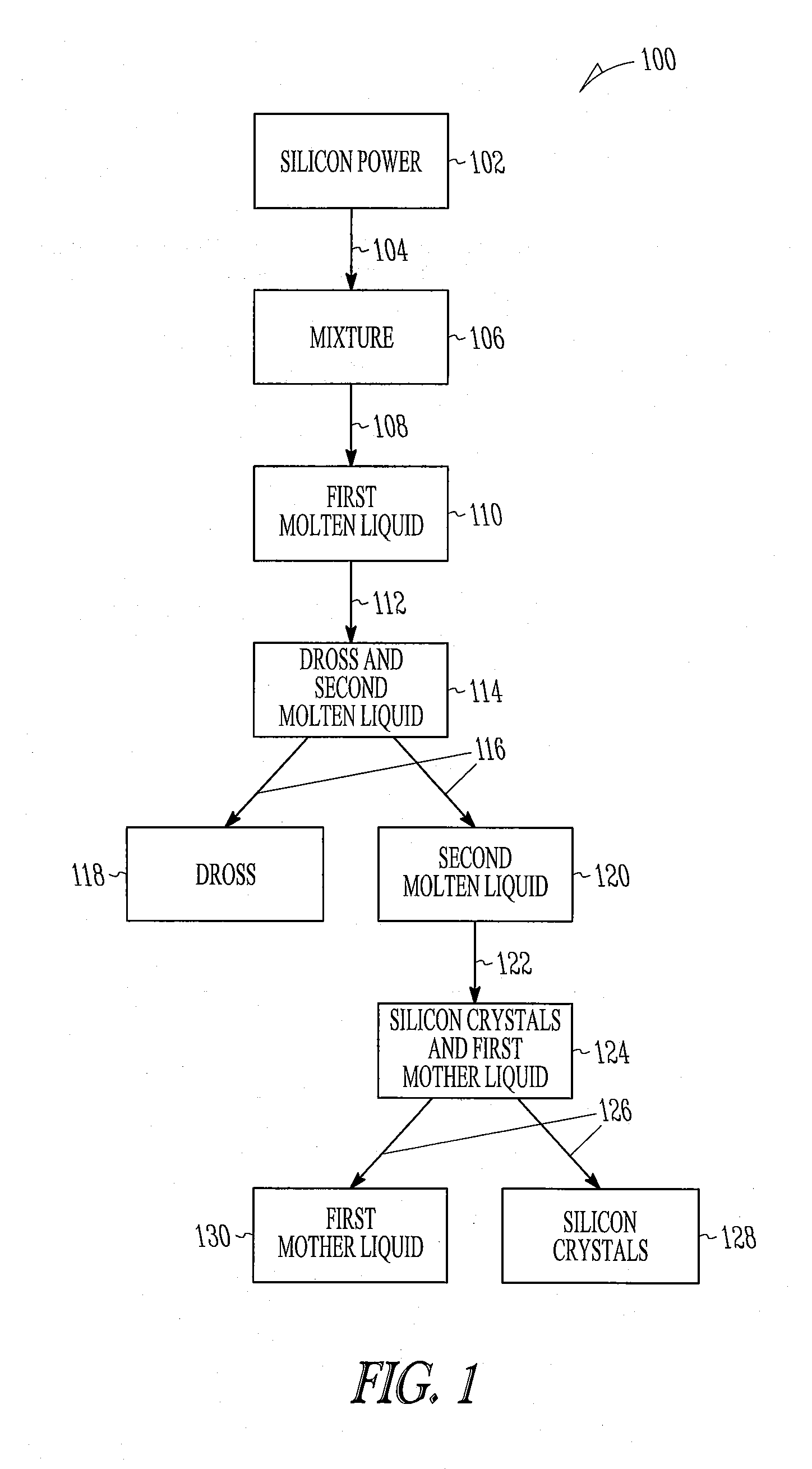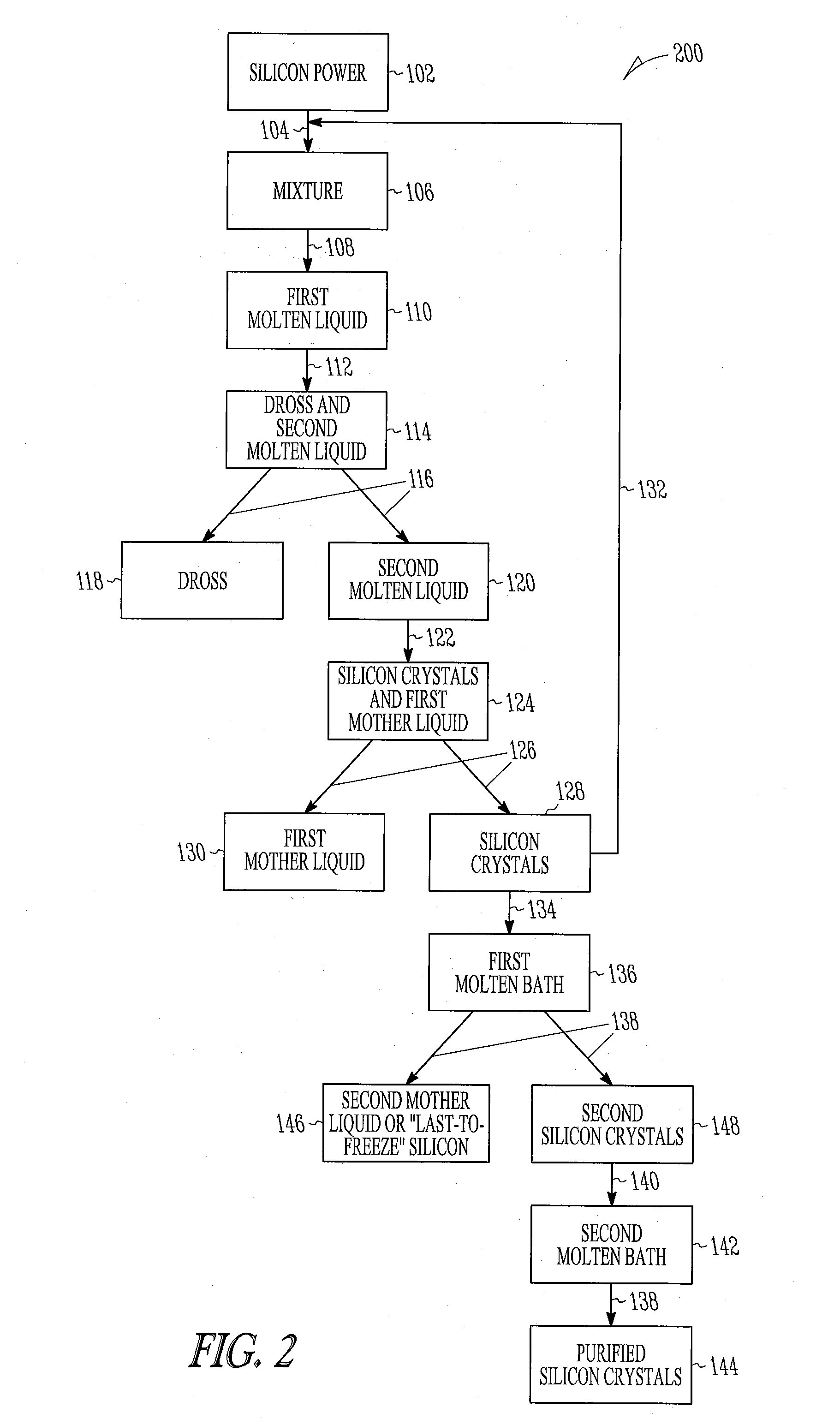Method for processing silicon powder to obtain silicon crystals
a technology of silicon powder and crystals, applied in the direction of silicon compounds, separation processes, dissolving, etc., can solve the problems of difficult to prevent contact with oxygen, which then forms silicon dioxide, and requires expensive and elaborate processing steps to remove high levels of contaminants
- Summary
- Abstract
- Description
- Claims
- Application Information
AI Technical Summary
Benefits of technology
Problems solved by technology
Method used
Image
Examples
example 1
[0075]Silicon powder is collected as a spent slurry from a manufacturing process, such as cutting of ingots to make solar panel cells. Most silicon carbide and polyethylene glycol is removed from the slurry and the silicon powder is dried to remove water. The powder is optionally treated with acid to further remove impurities before drying. The silicon powder is fed into a molten bath of aluminum and submerged. The silicon is fed using a rotary degasser and quickly submerged. The powder is sheared into individual grains. The powder is kept submerged by melt turbulence. The temperature is held above the solidus temperature.
[0076]Chlorine gas is injected into the mixture to remove silicon carbide, silicon dioxide, phosphorus and any other inclusions or precipitates formed. Dross is removed from the surface. The molten bath is then put through a fractional crystallization process to grow crystals in the bath. The temperature is raised above the liquidus temperature and then slowly lowe...
example 2
[0080]Silicon powder from a band saw is collected and allowed to settle to remove most of the water. The powder is then treated with a magnetic separation process to remove most of the loose iron. The powder is then treated with acid to remove any surface metals. The powder is then rinsed and dried under inert atmosphere to remove the remaining water. The dry powder is then fed onto the surface of a molten silicon bath. The dry powder may be fed in an inert atmosphere. The induction currents pull the powder down into the melt where it melts submerged. The induction currents are stopped and gas is injected into the molten bath, the slag, dross and inclusions like silicon carbide float to the top of the bath where they are removed. The molten silicon is then directional solidified to further remove impurities. The molten silicon may be filtered before directional solidification if required. The last silicon to freeze is then separated from the silicon ingot. Depending on the applicati...
PUM
| Property | Measurement | Unit |
|---|---|---|
| solidus temperature | aaaaa | aaaaa |
| time | aaaaa | aaaaa |
| liquidus temperature | aaaaa | aaaaa |
Abstract
Description
Claims
Application Information
 Login to View More
Login to View More - R&D
- Intellectual Property
- Life Sciences
- Materials
- Tech Scout
- Unparalleled Data Quality
- Higher Quality Content
- 60% Fewer Hallucinations
Browse by: Latest US Patents, China's latest patents, Technical Efficacy Thesaurus, Application Domain, Technology Topic, Popular Technical Reports.
© 2025 PatSnap. All rights reserved.Legal|Privacy policy|Modern Slavery Act Transparency Statement|Sitemap|About US| Contact US: help@patsnap.com


